After going storybook sculpture hunting in downtown Abilene, we headed about 15 miles north to Fort Phantom Hill.
Fort Phantom Hill was an army post on the Clear Fork of the Brazos River. It was established towards the end of 1851, with almost 300 officers and men assigned to the post over the following six months.
It’s thought that the name Fort Phantom Hill came about because the location appears to be on a hill from a distance, but the incline disappears as you approach, making the hill seem like an apparition.
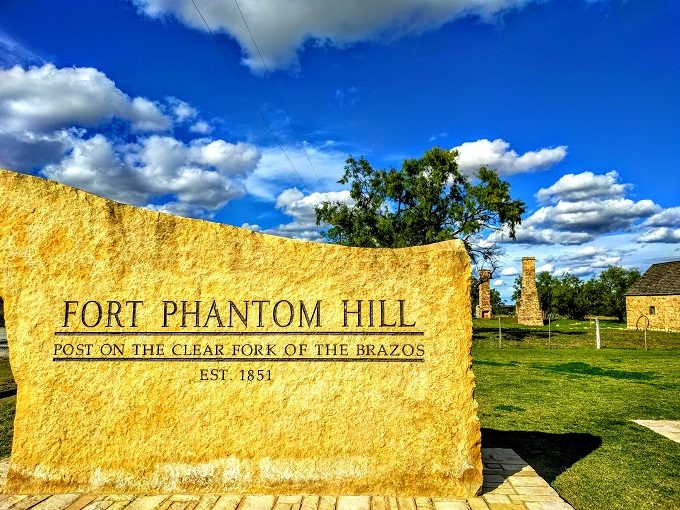
The Fort was only used for a couple of years and was subsequently abandoned on April 4, 1854 following several incidents with local Native Americans.
First Lieutenant Newton C. Givens arranged the burning of Fort Phantom Hill as they left. Seeing as the buildings were largely built using wood and grass, all that now remains is stone structures, most of which are chimney columns from stone fireplaces.
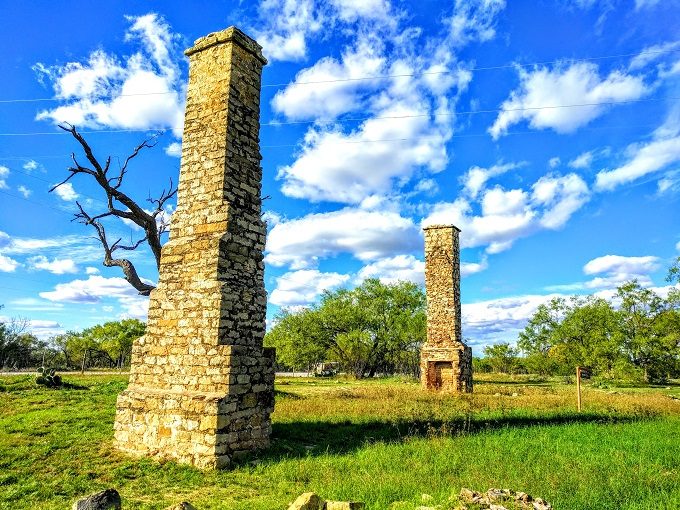
There are still a couple of full structures on site, one of which is the Guard House. This building was used as a jail, with soldiers usually being sent here after drinking too much and getting into fights. There were once three attached rooms on the site, but this building is the last remaining room.
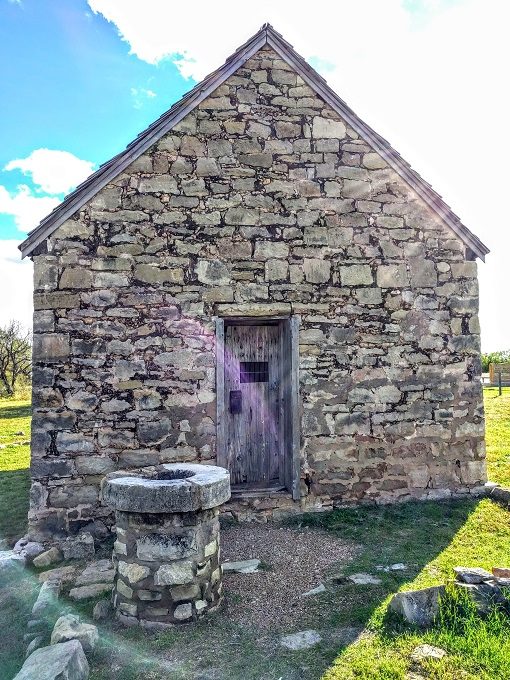
The best house at the Fort belonged to the Commanding Officer. He was responsible for everything that went on at Fort Phantom Hill and lived here with his family.

The Fort is located on ~22 acres of land, all of which is free for you to visit. Seeing as you’ll be walking through grass and brush, there’s a sign warning about snakes as you arrive. We thankfully didn’t see any, but changed from flip-flops to shoes beforehand just in case.
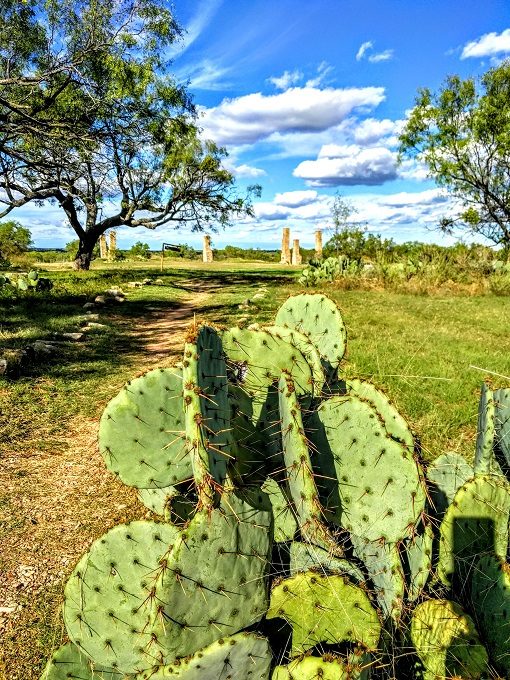
One of the buildings at Fort Phantom Hill belonged to the Adjutant who also served as the Commanding Officer’s assistant.
The building was not only used as his home and office, but also included a reading room for soldiers based at the Fort. A lot of their leisure time was spent in that room thanks to all the books that were brought in from Austin, a city located about 225 miles away.
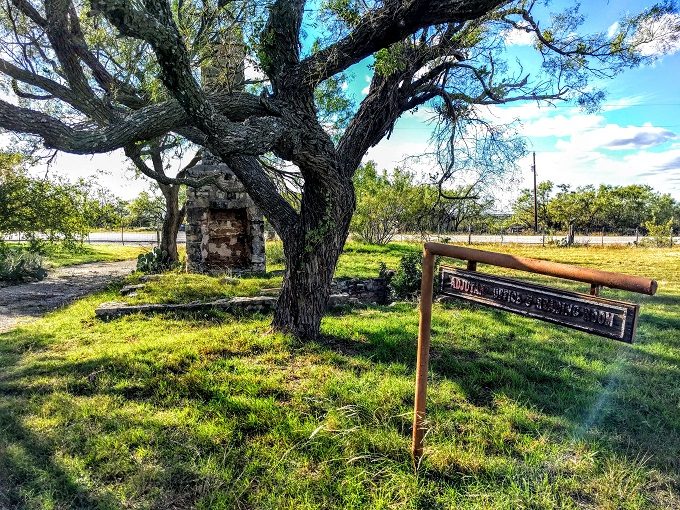
In addition to the stone fireplaces, some of the building’s foundations are still visible. Based on the design, it made me wonder if this section was used as a basement or storage area below ground level.
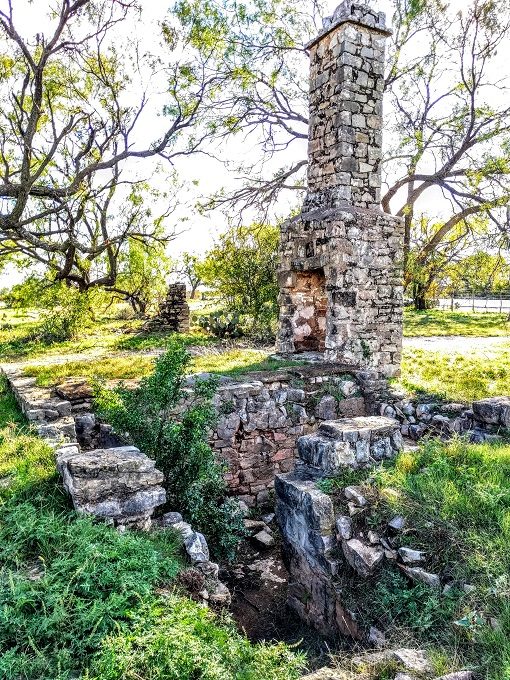
The Officers’ Quarters were split into two groups – North and South. The quarters for the South group had log fireplace chimneys, so those burned down in the fire in 1854. That means all that remains are the stone chimneys of the North group.
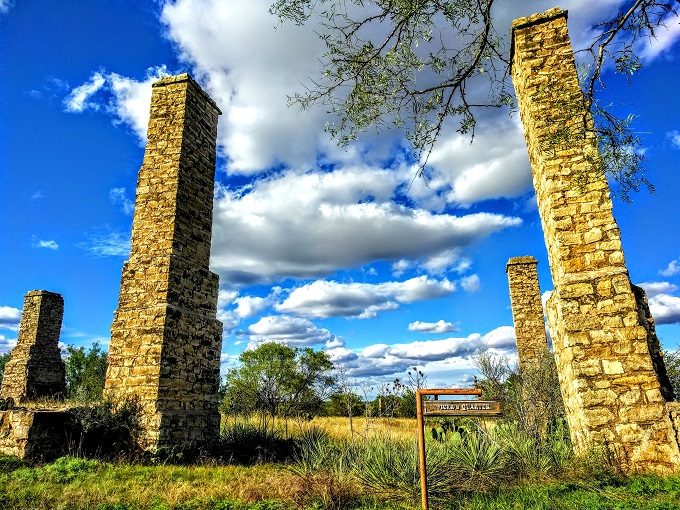
One of the largest stone fireplaces belonged to the Blacksmith. This building once served as his home, with his shop being located behind it.
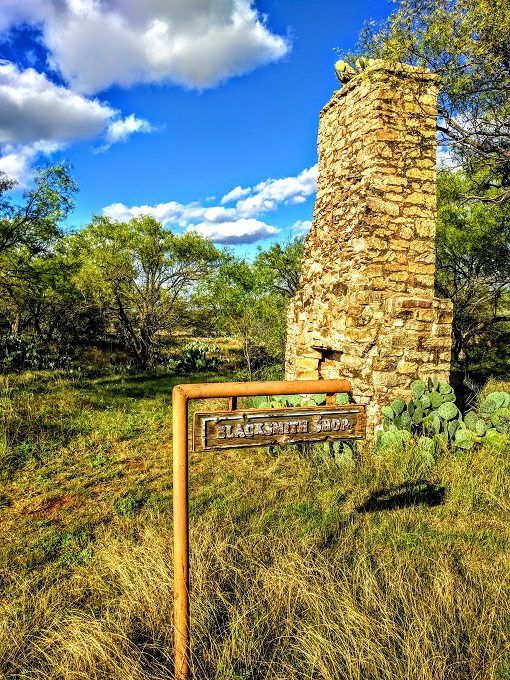
There are a few remains of the bakery which once stood on the site. What you can see in the photo below was once a stone oven that produced hundreds of loaves of bread every day.
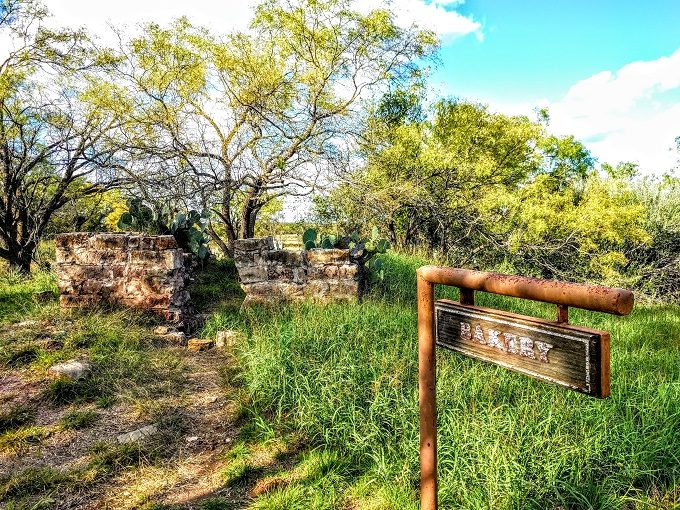
The longest remaining structure at the Fort is the Permanent Commissary Storehouse.
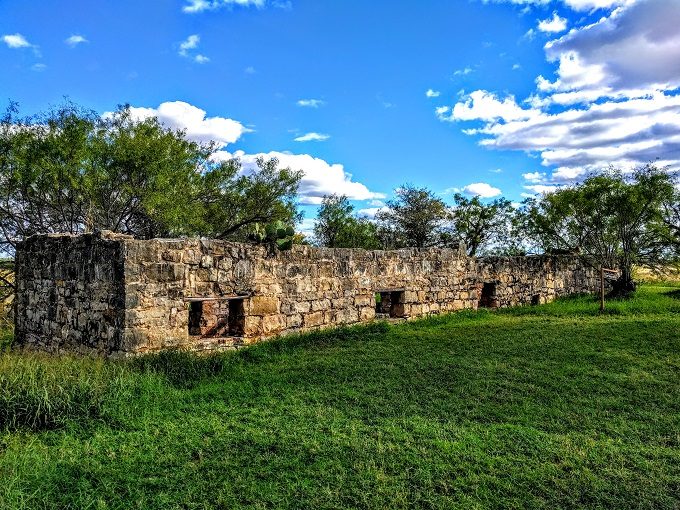
This was a two-level structure that was mainly built of stone, hence why so much of it still remains.
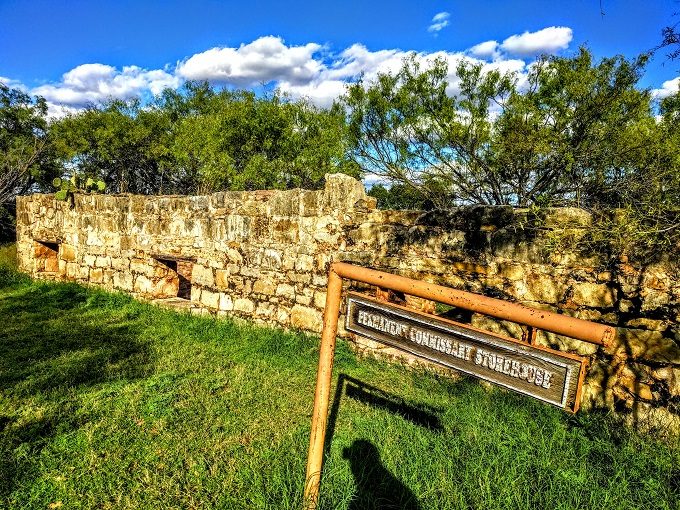
If you head round the other side of the storehouse, you can walk down in to it. I’d imagine much of the food was stored down in this level seeing as it’s below ground level and the stone would’ve helped keep the room cool.
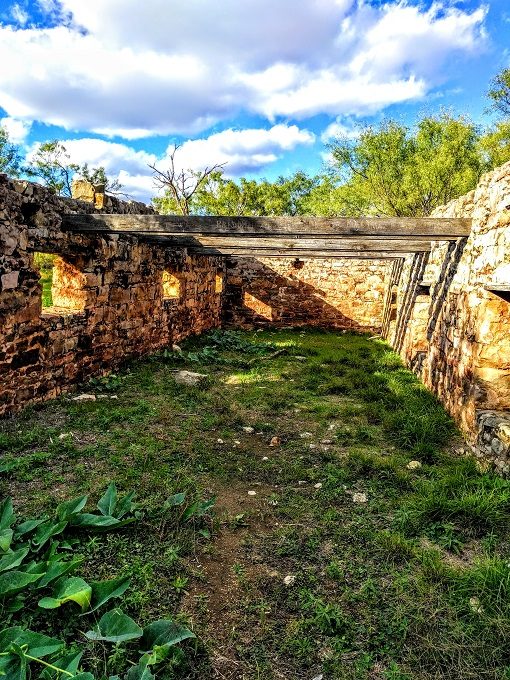
The Fort’s hospital consisted of three log rooms, each of which had a stone fireplace. The harsh living conditions at Fort Phantom Hill ensured most soldiers required a visit to the hospital at some point.
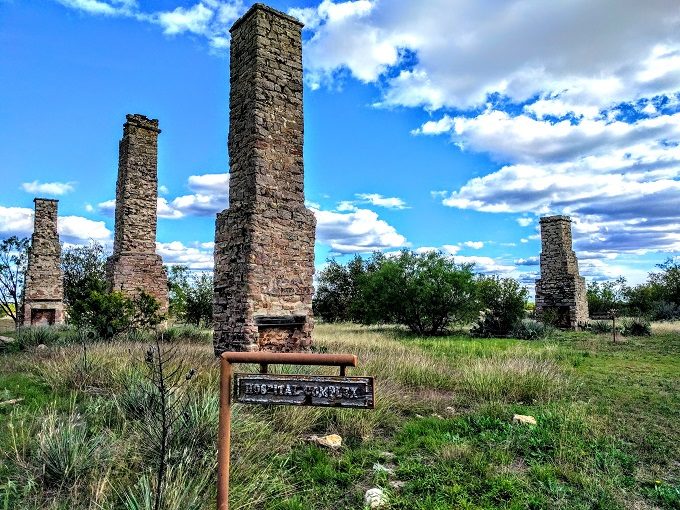
The surgeon’s quarters were understandably built next to the hospital and his house consisted of two rooms.
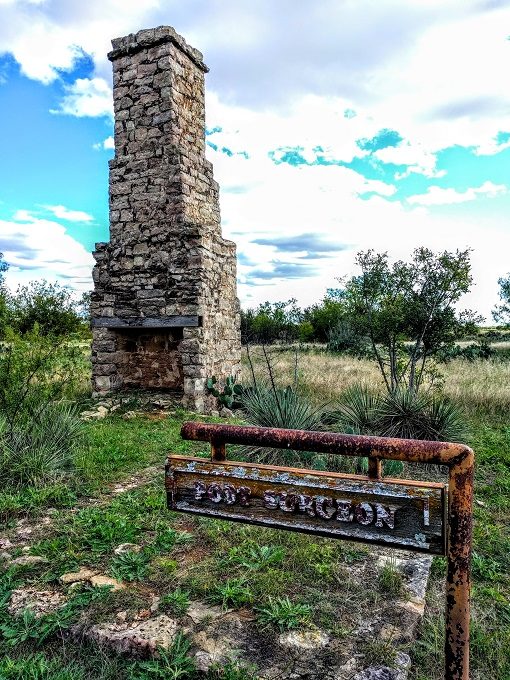
There are a couple of carts on the grounds of Fort Phantom Hill. We couldn’t see any information about them, but I’m assuming they’re replicas rather than original carts as they seemed to be in too good condition to be more than 150 years old.
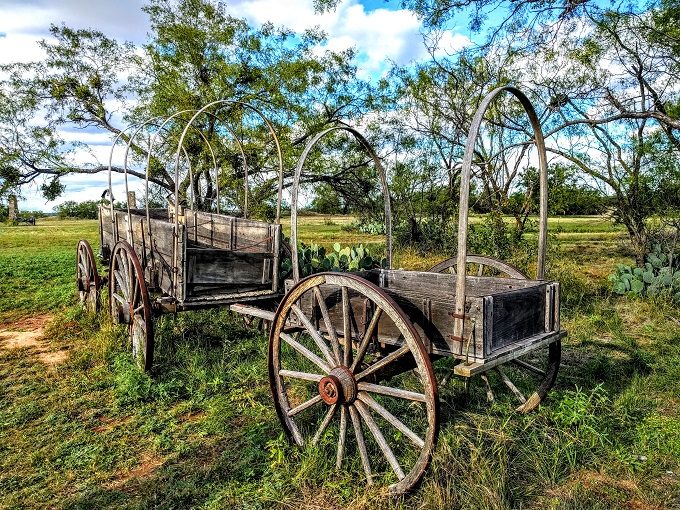
There was a large ghost structure at the Fort, similar to those we’d seen at the Mann-Simons historic home in Columbia SC. Although there weren’t any signs stating what it was, based on a map I think this structure indicates the location of one of the temporary company kitchens. This would once have contained a storeroom, a kitchen, a mess hall and a room for the company sergeant.
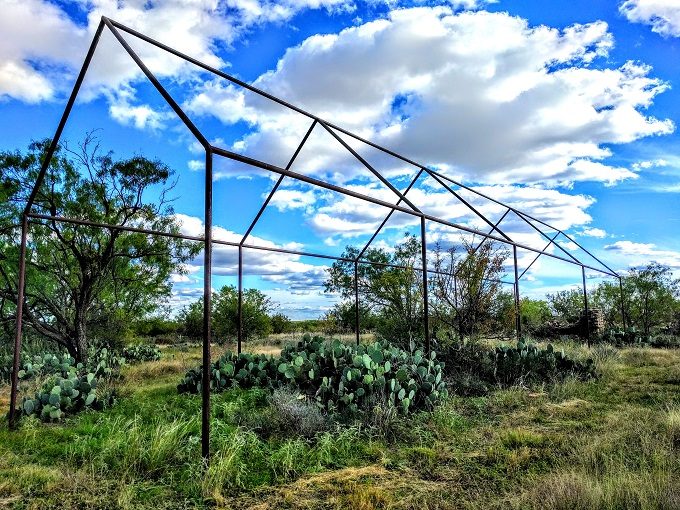
On the other side of West Lake Road is an additional building. This was once the Magazine used to store gunpowder and shot, hence its location away from the other structures.
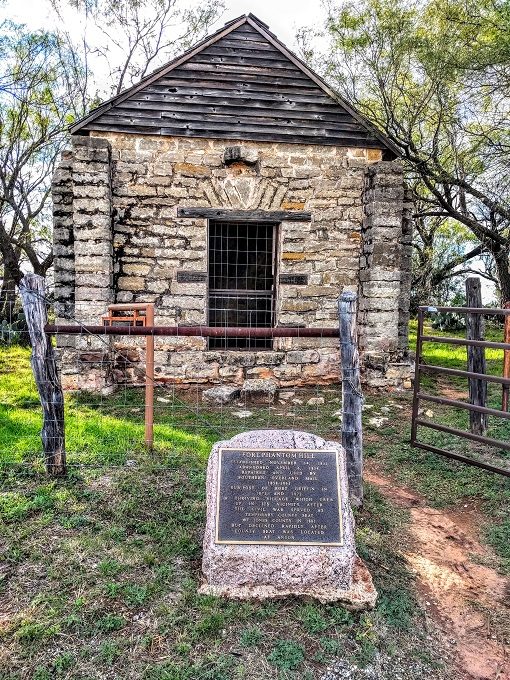
Final Thoughts
We spent about an hour wandering around the remains of Fort Phantom Hill near Abilene, Texas and found it very interesting.
My one regret is not picking up a leaflet from the Visitors Kiosk when arriving. I took one as we left and it contained a lot of information about the buildings. The leaflet also includes a map of where all the structures were located, including buildings of which there are no longer any traces. Having that with us as we walked around would’ve enhanced our visit, so be sure to pick one up before exploring Fort Phantom Hill.
Address
Fort Phantom Hill, 10818 FM600, Abilene, TX 79601
Leave a Reply